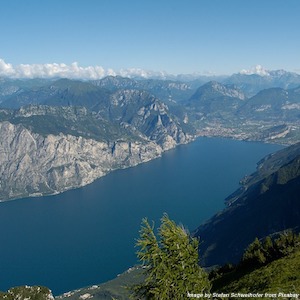Multidecadal analysis of Lake Garda water balance

All claims expressed in this article are solely those of the authors and do not necessarily represent those of their affiliated organizations, or those of the publisher, the editors and the reviewers. Any product that may be evaluated in this article or claim that may be made by its manufacturer is not guaranteed or endorsed by the publisher.
Authors
Lake Garda, the largest in Italy, is a major source of water supply inserted in a trans-regional area, sustaining an ever-increasing variety of water interests since the XX century. We perform a multidecadal (1928-2020) water balance, estimating the long-term evolution of the input and output components under changing anthropogenic and climatic stressors. First, we present our hydrometeorological database, assembled through a consistent effort of collection and digitization of data from different sources. Then, we analyse the annual water balance, assessing the magnitude of the residual term, i.e. the unknown term that embeds uncertainties and potential sources of error, closing the water balance equation. Uncertainties are investigated by applying a multi-method analysis for over-lake evaporation and basin evapotranspiration. Land use evolution, contributions from the Mount Baldo area as well as the potential role of groundwater fluxes are additionally analysed. Eventually, we compute a sensitivity analysis to delineate the role of each component on the lake’s level and outflow variations. The long-term analysis allows for distinguishing some trends in the input and output components of the water balance. Differences emerge in the periods before and after the lake’s impoundment (1951), and some effects of climate modifications appear in the last decades. Precipitation over the basin has a major influence on the water availability within the basin, a result confirmed by the sensitivity analysis. The entity of the residual term, which represents the unaccounted contributions, calls into question the role of the groundwater fluxes and the time scale of the analysis. The multi-method analysis highlights the dependency of the different lake evaporation and basin evapotranspiration methods on the amount of data available.
Edited by
Michela Rogora, National Research Council, Water Research Institute (CNR-IRSA), Verbania Pallanza, ItalySupporting Agencies
Italian Ministry of Education, University and Research (MIUR), European Union - FSE-REACT-EU, PON Research and Innovation 2014-2020How to Cite

This work is licensed under a Creative Commons Attribution-NonCommercial 4.0 International License.







